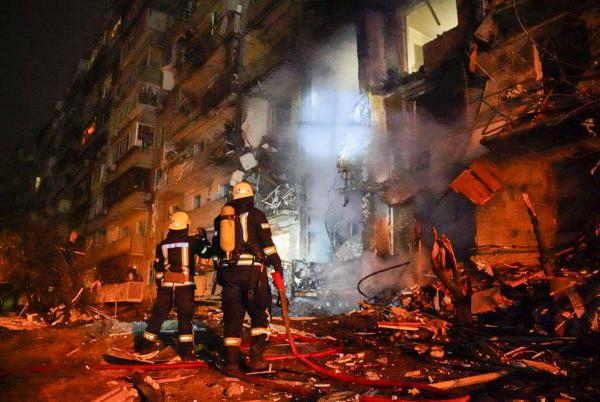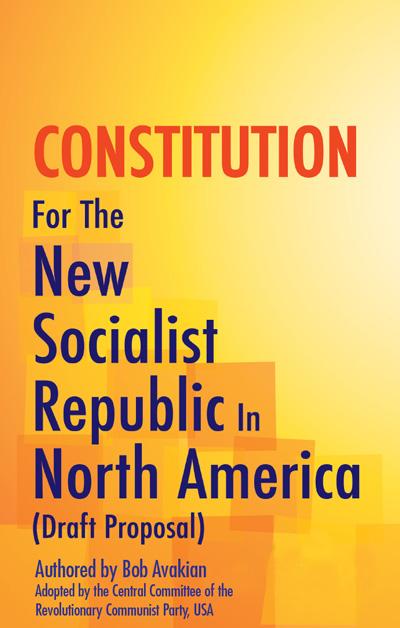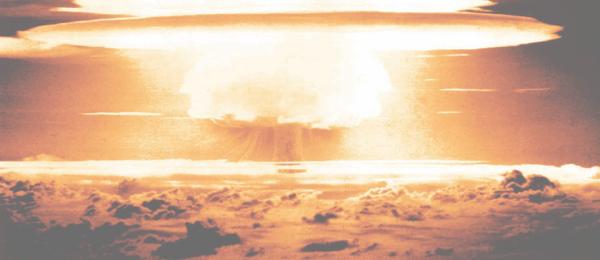
Hiroshima, Japan, August 6, 1945: “[A] blazing, million-degree fireball suddenly appeared just above the Japanese city of Hiroshima, instantly killing, burning alive, or vaporizing tens of thousands. Firestorms engulfed the city. Shockwaves and winds over 1,000 miles an hour came next, shattering bodies and buildings, hurling men, women, and children through the air. Nearly all structures were destroyed over a mile from ground zero.
“There were red burned and bloated dead bodies piled up high, the corpses with the guts and the eyes popped out...” Clouds of dust turned the morning into twilight; later, black rain fell.
From “American Crime Case #97: August 6 and 9, 1945—The Nuclear Incineration of Hiroshima and Nagasaki,” at revcom.us.
Thus the U.S. unleashed the nuclear nightmare on the world, haunting generation after generation with the prospect of a war that could literally put an end to humanity. Since then there were many extremely close calls, like when the U.S. under John F. Kennedy was willing to risk nuclear war with the Soviet Union during the Cuban Missile Crisis of 1962.1 But while the U.S. has always insisted on its “right” to launch a nuclear first strike, and has seriously considered using nukes against China, the Soviet Union, Vietnam, North Korea, and Iraq, these terrible weapons have not been used in war by any country since the U.S. bombing of Nagasaki (three days after Hiroshima).
But with the war in Ukraine, the nuclear danger has significantly escalated in recent weeks.
The U.S. and NATO are currently arming Ukrainian military forces fighting Russia, but are not in direct confrontation with Russia—and this distinction is very important, as direct conflicts could very easily escalate to an all-out nuclear war that would be an existential threat for humanity.
This is a big part of why the calls and clamor for NATO to establish “no-fly zones” in Ukraine (airspace denied to Russian warplanes) are horrifically reckless. The only way to actually enforce this would be by NATO planes shooting down Russian planes and air-defense systems, which could trigger a direct war between NATO and Russia.
At the same time the current policies carry intensified inherent risks, with the role of accident, “trip wires” and “escalation dynamics”—where opposing parties are threatened by, misunderstand, or react even more forcefully and belligerently to actions of the other. In a situation where the U.S. is “trying to figure out how do you get right up to the line without crossing over in a way that would risk direct confrontation with Russia,” all of this could spiral into direct conflict between Russia and NATO.2 This is a very—very—dangerous game of brinksmanship by nuclear powers—practicing a dangerous policy to the limits, before stopping.
In all of this, a basic principle of orientation, analysis and aim is critical:
[T]he essence of the conflict between the U.S. and countries like Russia and China is not one between “democracy” and “authoritarianism,” but is a matter of rivalry among imperialist powers, all of which are monstrous oppressors of masses of people, and none of which represent or act in the interests of humanity. What is called for, and urgently now, is to oppose all imperialist marauders and mass murderers, and all systems and relations of oppression and exploitation, while giving particular emphasis to opposing "our own" imperialist oppressors who commit their monstrous crimes “in our name” and seek to rally us to support them on the basis of a grotesque American chauvinism, which we must firmly reject and fiercely struggle against.
—Bob Avakian, “Shameless American Chauvinism: ‘Anti-Authoritarianism’ as a ‘Cover’ for Supporting U.S. Imperialism
Why Is the Risk of Nuclear War Growing?
In 1945, the U.S. was the only power with nuclear weapons and thus felt free to incinerate hundreds of thousands of “enemy” civilians without having to worry about retaliation. This itself shows how utterly ruthless and monstrous the U.S. imperialists are, and is a striking indictment.
But within a few years the Soviet Union3 began to develop its own nuclear arsenal, changing the “risk equation” for U.S. imperialism. A new paradigm emerged in the world: MAD—Mutually Assured Destruction. Each side knew that a nuclear war would likely be catastrophic for both of them. This was, and remains, a significant deterrent, or discouraging factor, to either side using nukes—and has applied more generally among other opposing nuclear powers in the world, such as India and Pakistan.
Among other factors, two in the present situation significantly escalate the risks of nuclear war.
Factor One: Rival imperialist blocs perceive very high stakes in this war, and the struggle to dominate key parts of the world.

Ukraine is second only to Russia in size in Europe. To the west: Poland, Slovakia, Hungary and Romania, countries that are part of the U.S.-led NATO military alliance. To the east, it shares a 1,700 mile border with Russia.
After 45 years of “Cold War” between the rival imperialist U.S. and Soviet blocs, in 1991 the Soviet Union collapsed. Since the 1950s, the Soviet Union had been a social-imperialist power, socialist in name only, imperialist in essence. The inheritor of the Soviet Union, Russia, remained a capitalist-imperialist power, but was greatly weakened by the loss of the other Soviet Union member nations and allies which it had previously dominated.
The U.S. rulers heralded this victory and the new “unipolar” world in which it had no major rivals. The U.S.’s 2018 Summary of National Defense Strategy summed up: “For decades the United States has enjoyed uncontested or dominant superiority in every operating domain. We could generally deploy our forces when we wanted, assemble them where we wanted, and operate how we wanted.” [Emphasis added]
To take advantage of and ensure this position remained unchallenged, the U.S. spent decades expanding NATO to 14 countries on or near Russia’s border, and working to bring pro-U.S. governments to power in others, including Ukraine (see background and historical timeline here), and initiating a process to bring Ukraine itself into NATO. This followed a certain logic—the expand-or-die logic of imperialism. At the same time, there have been major changes in the world, which are beyond the scope of this article—from U.S. defeats in Iraq and Afghanistan, the re-strengthening of the Russian military, and the rise of China as a rival imperialist bloc. As the U.S.’s 2017 National Security Strategy document bemoaned, Russia and China now
… are fielding military capabilities designed to deny America access in times of crisis and to contest our ability to operate freely in critical commercial zones during peacetime. In short, they are contesting our geopolitical advantages and trying to change the international order in their favor. [Emphasis added.]
All of this has set the stage for and is concentrated in the war in Ukraine, which all sides see as a high-stakes battle over domination of a key part of the world. A great risk in all this is that through the course of the war, sections of the ruling classes in these imperialist blocs may come to believe that resorting to nuclear weapons—and even risking nuclear war—may be worth it or even, from their own perverted imperialist logic, “strategically necessary” in this high-stakes fight for imperialist dominance. These are the same dynamics of imperialism that led to two world wars in the 20th century—except this time, nuclear weapons are in full play.
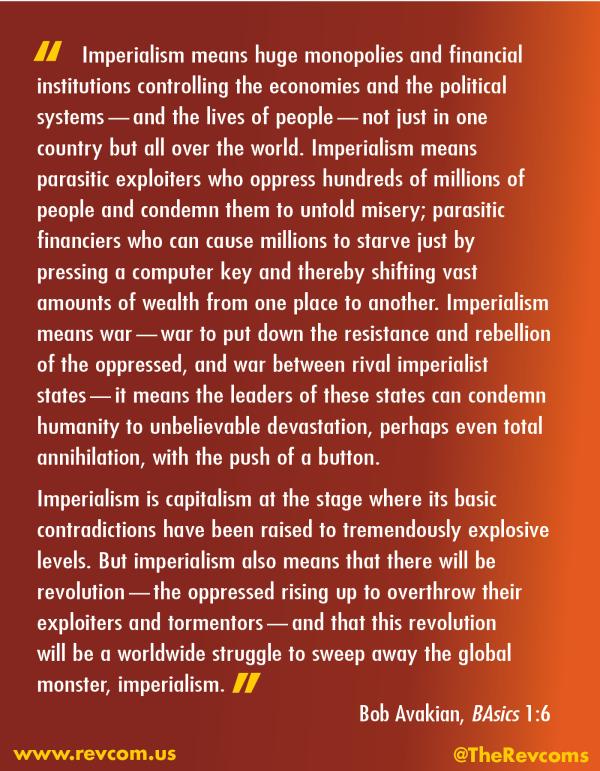
Factor Two: “Tactical” nuclear weapons—a potential “gateway drug” to all-out nuclear war
“Tactical” nuclear weapons (TNWs) refers to smaller, less powerful and more mobile nuclear weapons, meant to be used in a battlefield situation. TNWs were developed by the U.S. early in the Cold War, at a time when NATO’s conventional forces were weaker than Soviet forces. They were meant to be used if NATO was losing a conventional war. In that case, TNWs could be deployed to destroy key Soviet military assets,4 perhaps with tens of thousands of deaths, turning the tide in the war. (By contrast, “strategic” nukes are used to destroy whole cities and bring an opponent rapidly to its knees.)
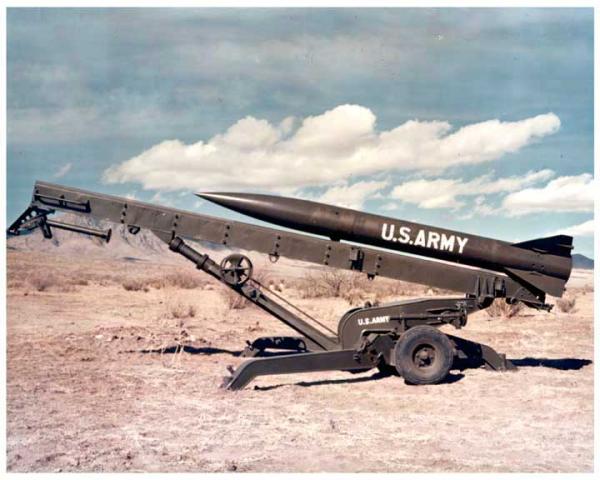
The U.S. "Little John" missile is capable of firing a tactical nuclear warhead with a 10 kiloton yield; the bomb that devastated Hiroshima had a yield of 15 kilotons.
First and foremost, it’s important to emphasize that while TNWs are “less” destructive than strategic nukes, they are vastly more destructive than conventional weapons. The smallest TNW—0.1 kilotons—is about nine times as powerful as the U.S.’s biggest conventional bomb. A March 10 opinion piece in Scientific American, stated that an 0.3 kiloton bomb would “cause all the horrors of Hiroshima, albeit on a smaller scale. A tactical nuclear weapon would produce a fireball, shock waves, and deadly radiation that would cause long-term health damage in survivors. Radioactive fallout would contaminate air, soil, water and the food supply.”5
In theory, because they are less destructive, according to some imperialist doctrines—or official policy—the use of TNWs may not necessarily trigger a nuclear response. The “recipient” of the TNW attack might decide that the stakes in the war were not worth potential destruction of their homeland, and agree to settle on terms more favorable to the side that had used the TNWs. Following this same logic, the threat to use TNWs can be a deterrent to the other side. For instance, early in the Ukraine war, Russia announced that its nuclear forces were on high alert, as part of signaling this deterrent.
“Gaming Out” Nuclear Escalation
It is the combination of the great underlying need these imperialist powers have to rival each other and dominate key parts of the world, and the relative uncertainty of how each would react to different developments that makes the current situation so dangerous. Russia sees Ukraine as an “existential” battle, in stopping NATO expansion, and with the U.S. also seeing a tremendous amount at stake—and great uncertainty in the “fog of war,” the dangers are very—very—real, and intensified.
To give an illustration: Military analyst/author Fred Kaplan wrote about two “war games” conducted at the end of the Obama administration. The premise was that Russia invades a NATO country, NATO is defeating the attack, so Russia launches a TNW on NATO forces. The question was: “How should NATO respond?”
The first “game” involved “second tier” military and government officials. Initially most participants advocated a nuclear response, but over many hours of debate they were won over to a non-nuclear response. The argument for this was that the U.S. could capitalize on Russia breaking the “taboo” on the use of nuclear weapons, and isolate and marginalize Russia politically.
A month later, the same “game” was run with cabinet members and top-tier military chiefs. According to Kaplan:
Some of the same concerns were raised—the possibility of isolating the Russians by not taking the nuclear bait, the lack of any sensible targets, the uncertainty of whether nukes would dampen or further escalate the war. Still, the principals decided we [Ed: the U.S.] had to respond with nuclear weapons, to maintain credibility among our allies and adversaries. They decided to fire a few nuclear weapons at the former Soviet republic of Belarus, even though, in the game, it had no involvement in the Russian attacks… [Italic in original, bold added.]
As we understand, the game was called off—perhaps because strategic thinkers were worried that “playing it out” would lead to a result of severe strategic nuclear exchanges and did not want to cause panic if the result leaked, or for other reasons, but this is worth noting.6
Conclusion
In all this, as the horrifying risk of nuclear weapons is heightened, a key point of orientation from Bob Avakian needs to be emphasized again—in conclusion:
Of course, this act of imperialist aggression by Russia deserves to be condemned. But especially for people residing in this country—which, again, by far holds the record for such acts of aggression—it is a matter of basic principle and profound importance not to be echoing the positions and serving the aims of “our” imperialists, and instead to be making very clear our opposition to the aims and actions of these (U.S.) imperialists, who are using opposition to the Russian invasion of Ukraine, not as a way of promoting “peace,” or “the right of nations to self-determination,” but as means of furthering U.S. imperialist interests, in opposition to the rival Russian imperialists. So, in keeping with this crucial principle, any opposition to the Russian invasion of Ukraine, particularly by people in this imperialist country, should be accompanied by a clear and definite stand of also opposing the role of the U.S. in the world, including the wars it continually wages, and other ways it violently interferes in other countries.
Nuclear War: An Unprecedented Threat to Humanity and Our Planet
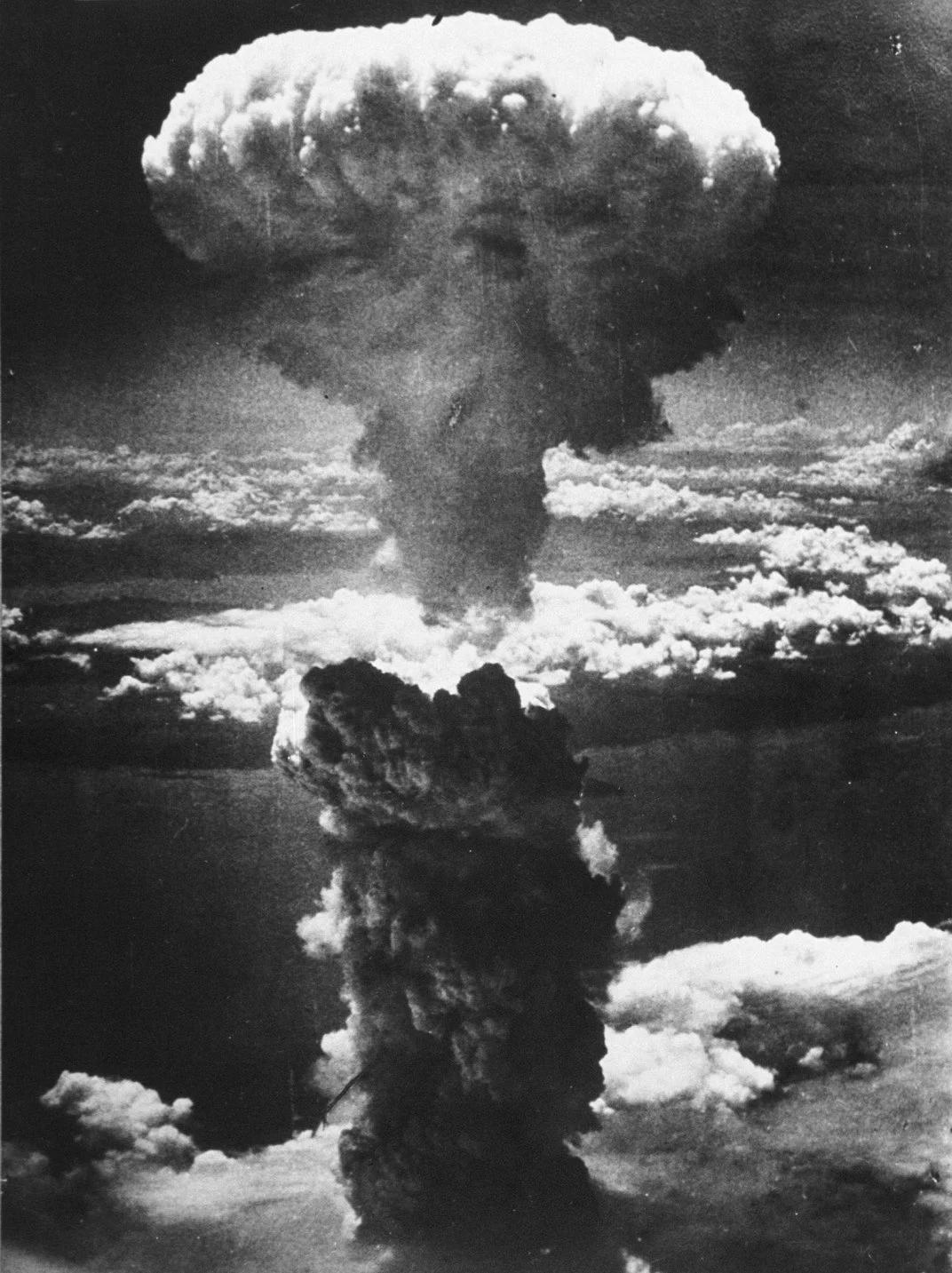
A dense column of smoke rises more than 60,000 feet into the air over Nagasaki. Courtesy of the National Archives.
To understand how incredibly dangerous nuclear weapons are, consider this:
The single bomb that devastated Hiroshima in 1945, ultimately killing over 140,000 people, had a yield of 15 kilotons—the equivalent of 15 thousand tons of TNT. As of 2020, nine countries possessed over 12,700 nuclear warheads—over 90 percent in the hands of the U.S. and Russia. The most powerful warhead has a yield of 1.2 megatons—the equivalent of 1.2 million tons, 80 times as powerful as the American bomb that incinerated Hiroshima.

Nagasaki, November 1945. Photo: U.S. Army Air Forces via japanairraids.org
An article in The Atlantic says that the detonation of a single one megaton bomb
… would, within about a four-mile radius, produce winds equal to those in a Category 5 hurricane, immediately flattening buildings, knocking down power lines, and triggering gas leaks. Anyone within seven miles of the detonation would suffer third-degree burns, the kind that sear and blister flesh. …
A 2007 study estimated that if 100 small nuclear weapons were detonated, a number equal to only 0.03 percent of the planet’s total arsenal, the number of “direct fatalities due to fire and smoke would be comparable to those worldwide in World War II.”

Body of child burned by U.S. nuclear bombing of Hiroshima.
Scientific studies confirm that if even a hundred Hiroshima-size nukes were launched in a “limited” or regional nuclear war, the global impact would be a catastrophe unprecedented in human history.
The Atlantic article and others (here, here and here) explain that the smoke and ash catapulted into the upper atmosphere would in the short run block out the sun’s rays, causing temperatures to drop and crops to fail, leading to global famine afflicting over two billion people. Acidification of the oceans would be sped up, leading to massive destruction of species and coral reefs. Much of the ozone layer in the atmosphere that protects us from the sun’s ultraviolet rays would be destroyed, leading to a global pandemic of skin cancer among humans and the destruction of countless species of plants and animals.
In other words, even a “limited” nuclear war would result in an absolutely unprecedented disaster for humanity, if not outright extinction.
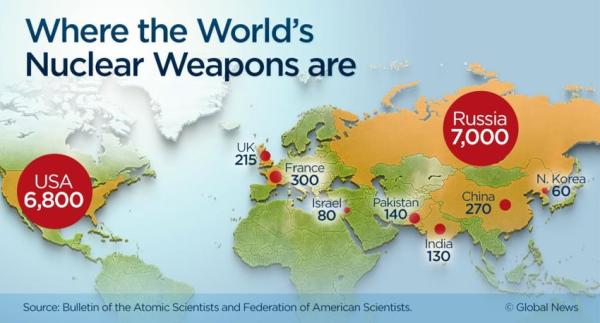
Source: Bulletin of Atomic Scientists
